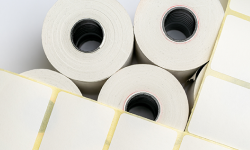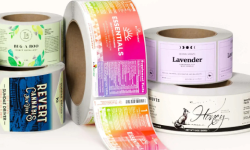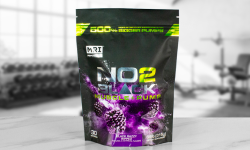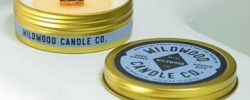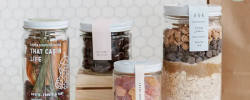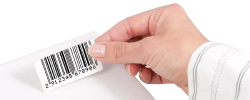In our previous posts, we've discussed everything from product label size and shape, the need for commercial quality artwork, and other aspects of the label printing process. Now it's time for us to have a discussion on the various label material types you can use. Again, many label printing companies tend to make this way more complicated than it needs to be, but it certainly is something to be considered. The label material type you choose may have some impact on price, but it’s important to understand that false economics often have costly results – so the “cost per label” is not the only factor you should consider. After all, the label itself is a critical part of the product – if it looks good and it looks like a great deal of love and care went into it, that creates a very different impression in the mind of the shopper than a product label that looks like it was produced as an after-thought.
Material Choices For Custom Label Printing
Okay – so the first point to consider about material choice is that most custom label printing companies offer an enormous range of materials, which invariably tends to over-complicate the whole decision-making process. Here’s our perspective on this challenge....
Many label printers will by default recommend a material called “Semi Gloss Paper” as their starting point, usually because it’s the cheapest material option and their goal is to win your business on price. This material may be fine for some products, but (being made of paper) it’s not very durable when exposed to moisture – or when the consumer has your face cream or BBQ sauce on their hands.
Frankly, on short runs (i.e. product labels printed in relatively low quantities) any difference in material cost is negligible anyway, so why settle for second best if it only means saving a fraction of a penny per label? Now, it may sound like we're really against using a paper label, but there certainly are specialty papers that work very well on some products (e.g. wine bottles and the like). Paper labels can be quite effective on such products because they're not intended for long-term use – but we try to minimize the number of options to make your job easier.
BOPP For Durable Product Labels
After paper, the next most common product label material is a special form of plastic called BOPP in the printing industry - which stands for Biaxially-Oriented PolyPropylene ... (yawn) .... anyway, BOPP labels are what we use at Wizard Labels as our mainstay offering – it comes in a few different variations (White, Clear, and a silver-metallized offering that we call Chrome BOPP for simplicity’s sake, because it looks just like chrome). The White BOPP labels account for a very large proportion of all product labels we print, and it works beautifully on the vast majority of products. Being a plastic, the labels are effectively impervious to water and anything else the product may get exposed to, which means your product will retain its “brand new” look throughout its normal life.
Label Printing And The Environment
But isn’t paper more eco-friendly than plastic? Well, it depends who you ask. Paper is theoretically a “renewable” resource and it has the potential to break down in a landfill, so that makes it eco-friendly – right? Well... not necessarily. When you factor in the carbon footprint of all the logging trucks and paper mills, it’s not as clear-cut as it may seem. Then, if you stick a paper-based custom label on a plastic container (or apply a plastic over-laminate to protect it, which is very common indeed), the recycling stream gets very complicated as well. We’re certainly not experts in eco-management, but we tend to think the primary purpose of a product label is to help “sell” the product – and the label is a very small part of a product in the overall analysis. If you’re comfortable using plastic containers for practical reasons (even as a consumer), then applying a plastic label doesn’t seem like a major abandonment of principle – and it may even help the recycling stream in a small way too.
Lastly, material options may be affected by the equipment used during label printing. For example, using a plastic material in a laser printer would not be a good idea – you'll end up with a very sticky mess and a printer destined for the scrap-heap, as the heat of the laser engine will melt the material. So there are instances where we'll help guide you towards the most appropriate materials in the circumstances, and there is not always a single answer to every challenge. Welcome to the world of choices.
Want to know more? See our resources for more information on choosing a material such as BOPP for your product labels.
